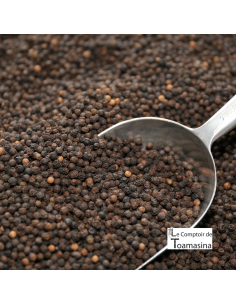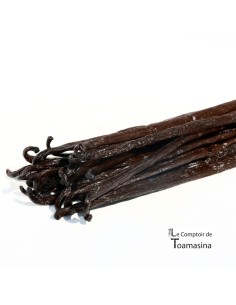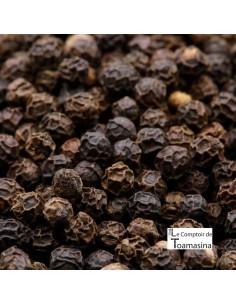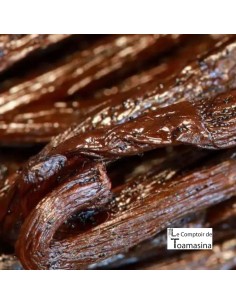Pimenta da Jamaica, also known by different local names, is a species of tree in the Myrtaceae family, native to Central America and the Caribbean. It can reach up to 10 meters in height and flourishes in subtropical, temperate and tropical climates.
Its tree and its leaves will smell like cloves.
Its cultivation requires little light and it is characterized by a persistent life cycle.
The optimal planting period extends from September to January, with a first harvest expected between 4 and 5 years after planting. Please note, we are here for the southern hemisphere.
Subsequent harvests can be done every 6 months.
This species grows harmoniously with a wide variety of other trees and smaller crops, as long as the necessary spacing is respected for each species.
Pimenta da Jamaica offers a unique palette of flavors and is treasured in many cuisines around the world for its captivating aroma and taste properties.
Pimenta dioica, commonly known as Pimenta-da-Jamaica or Pimenta-de-Coroa, is a species of tree in the Myrtaceae family, which can reach 10 meters in height. Its dried fruits are used as a condiment, combining easily with other spices and giving off an odor similar to a mixture of cinnamon, black pepper and nutmeg.
This tree has smooth, grayish bark, leathery leaves, flowers in axillary crowns and berry fruits. Native to Central America and the Caribbean, its wood is used to make canes, and its bark, fruits, and seeds are stimulant, carminative, aromatic, and black pepper substitute. In Brazil it is also known under the names murta-pimenta and Pimenta.
The leaves of this tree have medicinal applications (for example, in gynecological disorders or as an analgesic) and in the manufacture of cosmetics and perfumes. The wood is used for the construction of furniture and rural buildings. The flowers are useful for the production of honey and the trees for shading coffee plantations, as hedges or as ornamental plants. It is endemic to the neotropics where its current distribution is limited (Mexico, Belize, Salvador, Guatemala, Honduras, Nicaragua, Cuba and Jamaica).
























